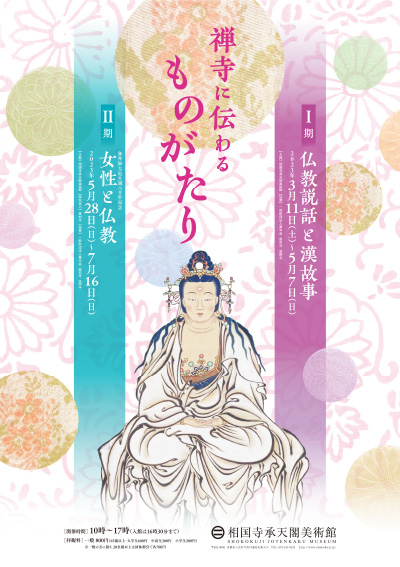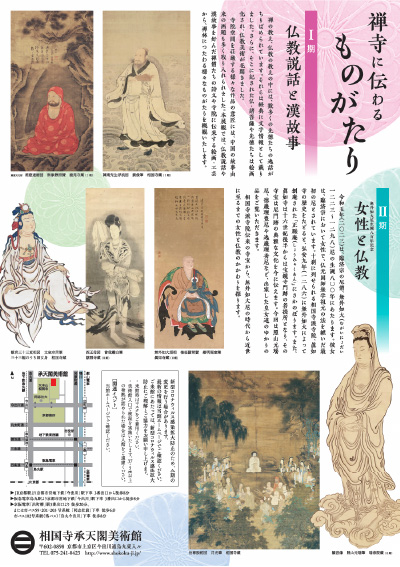EXHIBITION
An Exhibition of Stories Passed Down from Zen Temples
Period I – Buddhist Tales and Chinese Folklore / Period II – Women and Buddhism
Period I: March 11 (Sat) – May 7 (Sun), 2023 / Period II: May 28 (Sun) – July 16 (Sun), 2023
An Exhibition of Stories Passed Down from Zen TemplesPeriod I – Buddhist Tales and Chinese Folklore / Period II – Women and Buddhism
Period I: March 11 (Sat) – May 7 (Sun), 2023 / Period II: May 28 (Sun) – July 16 (Sun), 2023
- Overview
- Period I – Exhibition Composition
- Period I – Highlights
- Period II – Exhibition Composition
- Period II – Highlight
- Basic Information
- Related Events
Overview
Period IBuddhist Tales and Chinese Folklore
Buddhism and Zen teachings contain numerous anecdotes of virtuous ancestors, which were recorded in scriptures and transmitted orally as well as in written accounts. In addition, the Buddha, bodhisattvas, and virtuous ancestors depicted in these scriptures were depicted in paintings, leading to the flourishing of Buddhist art.
Many temple spaces were adorned with intricate works of art inspired by Chinese folklore. This exhibition presents an overview of various tales from Zen gardens, including poems, paintings, and craftworks transmitted from temples and Zen gardens, that are inspired by Buddhist tales and Chinese folklore, favored by Zen monks.
Period IICommemoration of the 800th Anniversary of the Birth of Mugainyodai Women and Buddhism
The year 2023 marks the 800th anniversary of the birth of Mugainyodai, a nun in the Rinzai school of Buddhism. She is considered the first nun to inherit the teachings of BukkoKokushi-MugakuSogen, the founder of the Rinzai school, and is recognized as a female leader within the Rinzai school. The history of the Shokoku-ji temple, one of the ten major Rinzai temples, can be traced back to the establishment of the “Shomyaku-an” temple by Mugainyoda in 1286. Moreover, Shinnyo-ji temple became a Bodai-sho temple of Hokyo-ji temple ruins in the second half of the 16th century, and its temple treasures convey the graceful culture of the nun lineage. This exhibition showcases the works of noblewomen who became nuns, including Shosan Gen’yo, Tokugan Riho, and Itsugan Rishu.
From temple treasures transmitted from Shokoku-ji temples, we will explore the relationship between women and Buddhism from the time of Mugainyodai to the present day.
Period I – Exhibition Composition
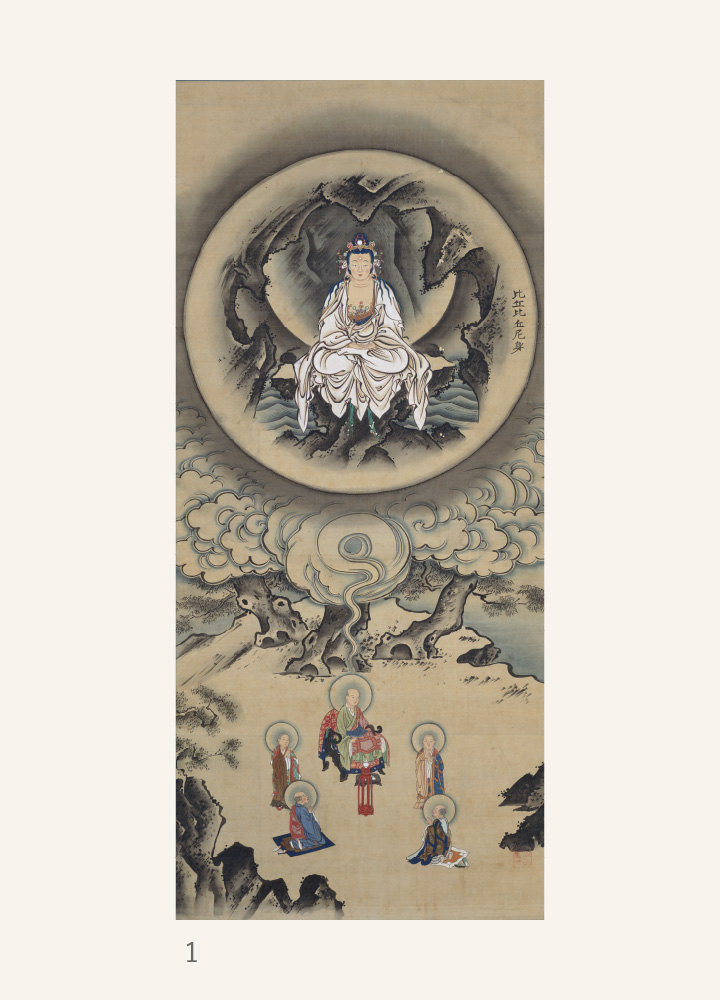
Chapter 1Tales of Kannon
Kannon’s Thirty-Three Transformations – Bunshitsu Sogen Brush – Thirty-Three Panels – Shokoku-ji Temple Collection – (Image 1)
Among the thirty-three panels Bikubiku-Amami
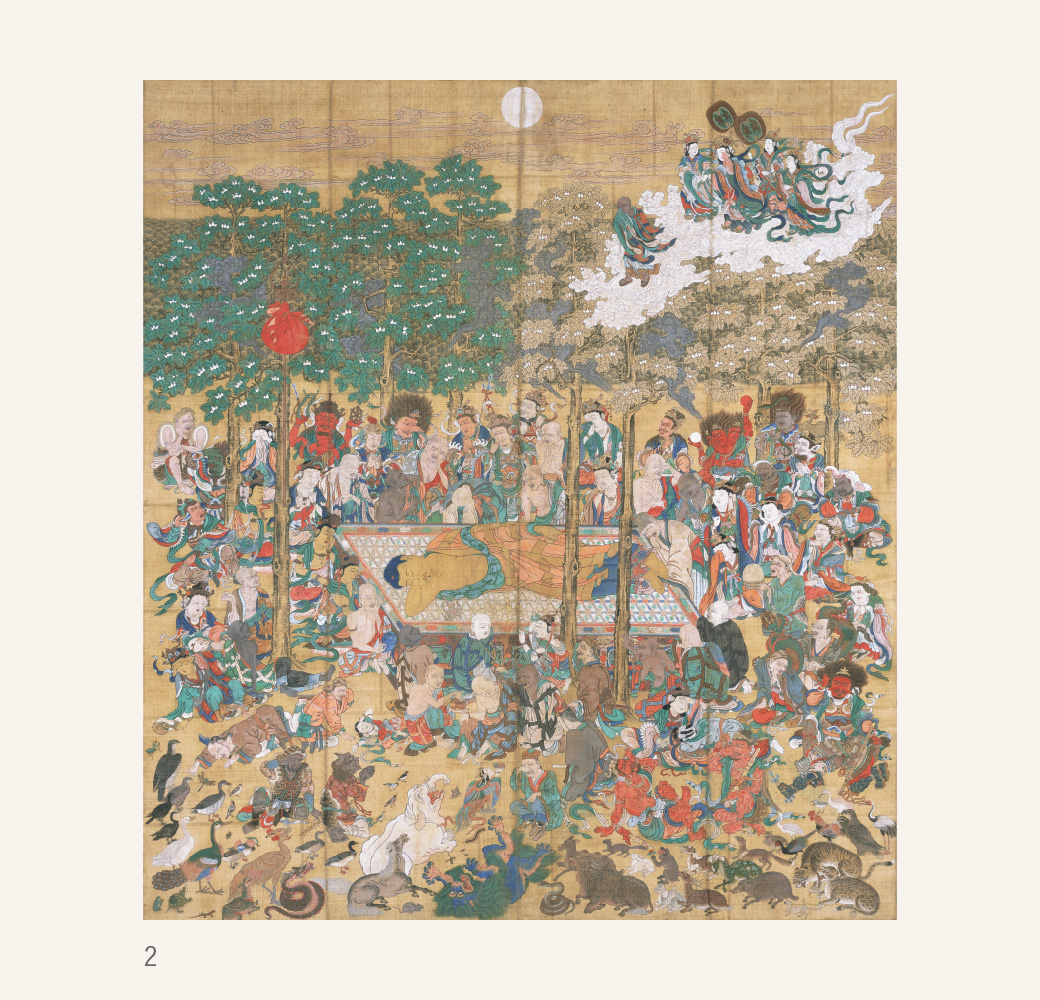
Chapter 2Tales of the Historical Buddha
The Buddha’s Explanation of the States of Being – Gekko Brush – Shokoku-ji Temple Collection
The Nirvana – Rokuon-ji Temple Collection – (Image 2)
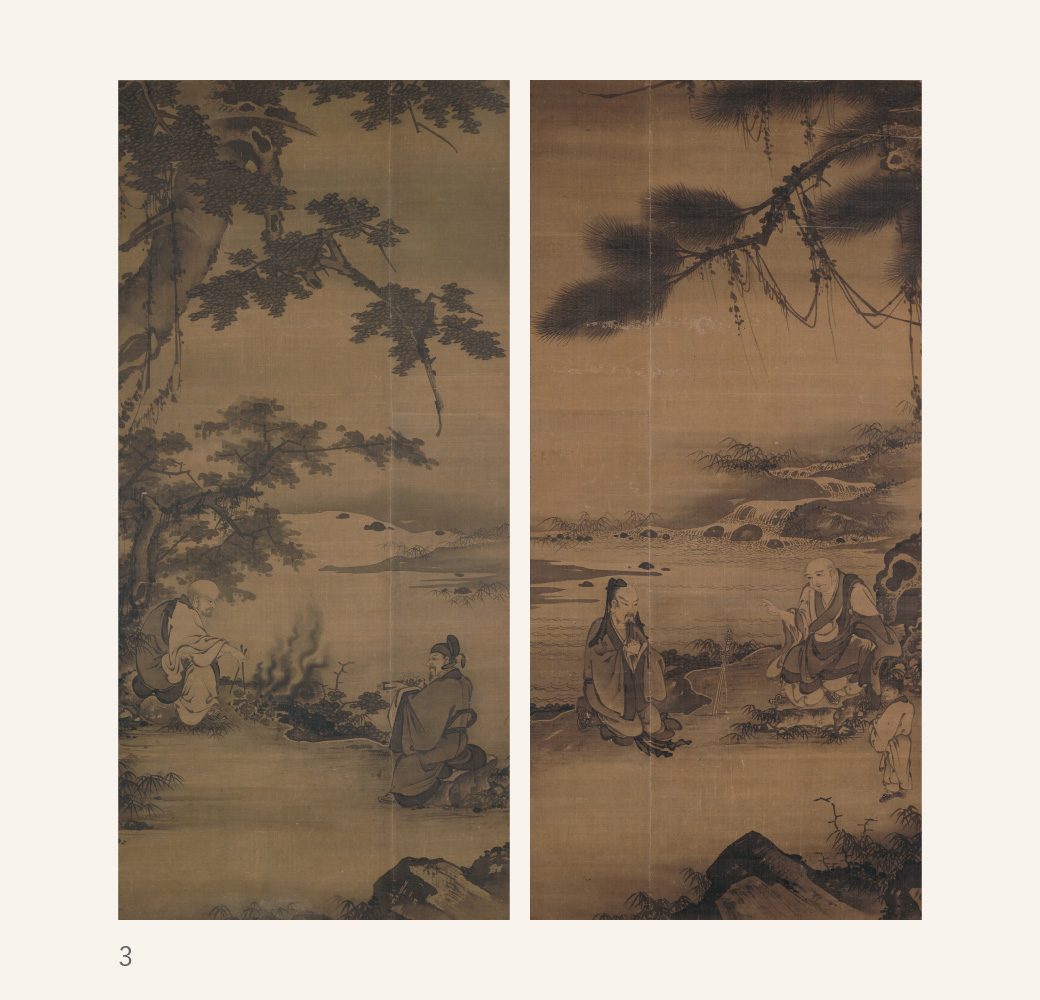
Chapter 3Tales of Zen Monks
Kutei – Lazy Praise of the Monk – Shotanshi Brush – Shokoku-ji Temple Collection – (Image 3)
Hōkan-san’s Findings – Mokkei Brush – Rokuon-ji Temple Collection
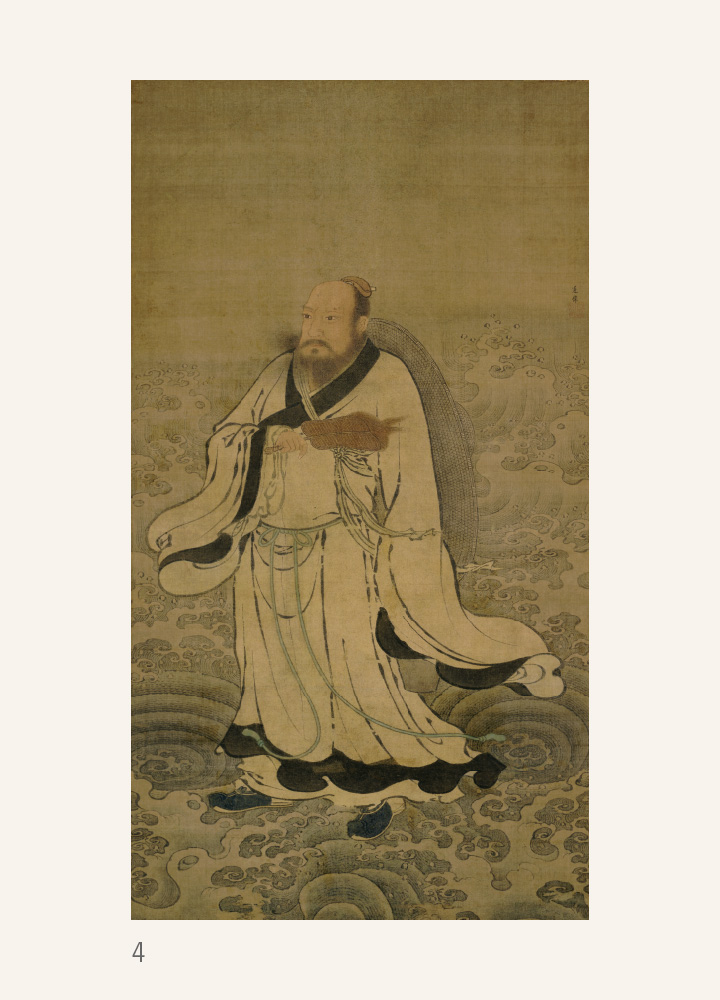
Chapter 4Tales of Virtuous Ancestors from the Mainland
Chennan’s Wandering – Liu Jun Brush – Shokoku-ji Temple Collection – (Image 4)
The Four Sages of Zhongshan – Kano Motonobu Brush – Jisho-ji Temple Collection
Period I – Highlights
Highlight 1All Thirty-Three Kannon Panels Together
The number thirty-three refers to the content of the Lotus Sutra’s Pumen chapter, in which Kannon Bosatsu transforms into thirty-three forms to save people. The thirty-three panels painted by Bunshitsu Sogen, a monk at Shokoku-ji temple, depict Kannon in various forms. These panels were once displayed during the Kannon-senbou ritual, a representative ritual at the Shokoku-ji temple. Please see all the works that once adorned the space for invoking Kannon.
Highlight 2A Variety of Works with Stories in the Pictures
The themes of the paintings seen in Zen temples are diverse. There are works depicting the world described in Buddhist scriptures brought from India to mainland China and then to Japan, as well as works depicting the anecdotes of figures originating from Confucianism and Taoism, among others. Many works transmitted to Japan depict a world that cannot be seen in Japan, with figures wearing different attire and with different appearances from those in Japan, depicted with various strange and extraordinary phenomena. These works stimulate the imagination of those who see them, transcending time and place.
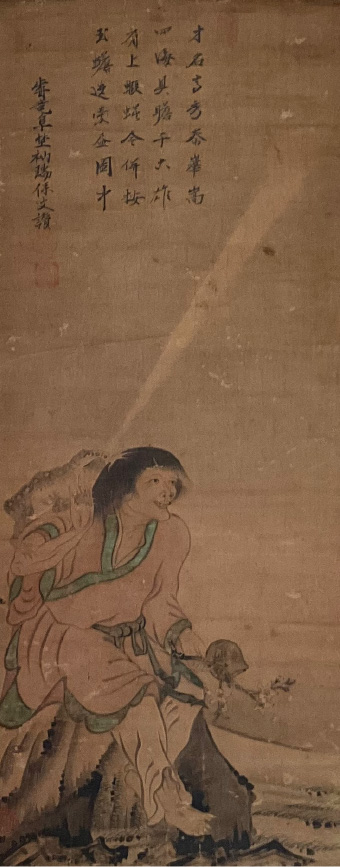
The Toad Immortal – Jisho-in Temple Collection –
*First public display
Period II – Exhibition Composition
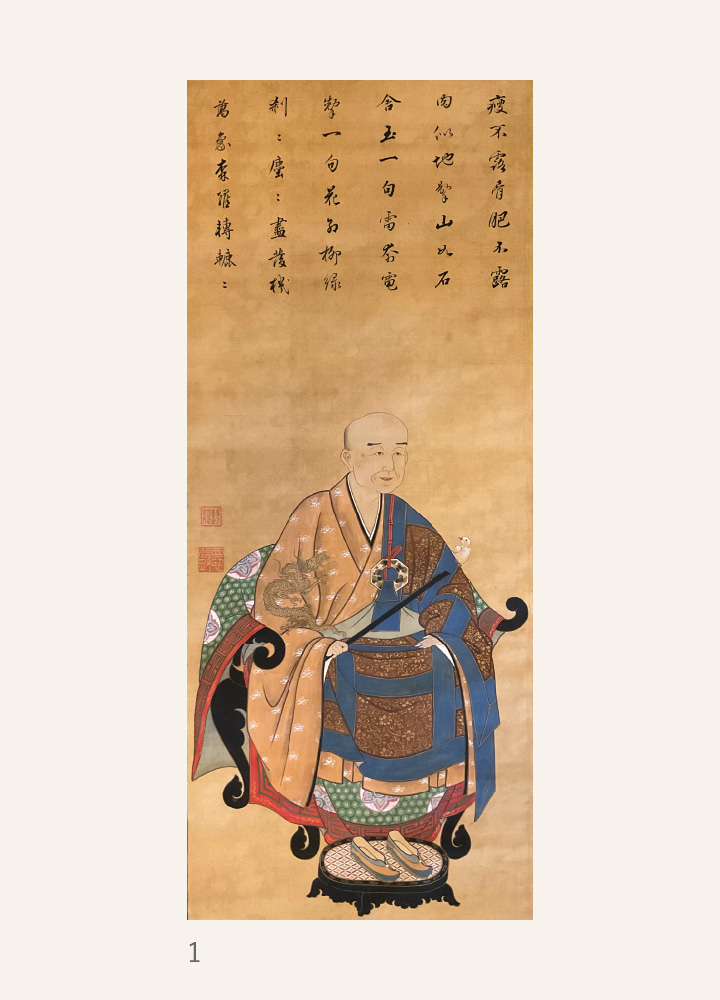
Chapter 1The Zen learned by Mugainyodai
Mugaku Sogen’s Portrait – Shinnyo-ji Temple Collection – (Image 1) – *First public display
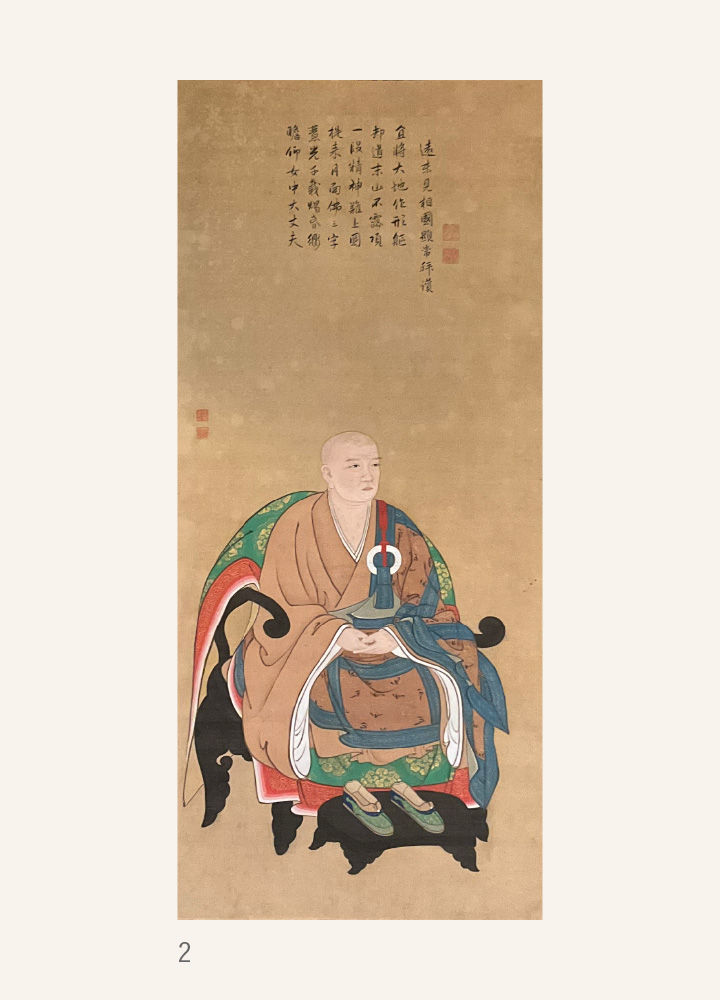
Chapter 2Mugainyodai and Shinnyo-ji Temple
Mugainyodai’s Portrait – Shinnyo-ji Temple Collection – (Image 2) – *First public display
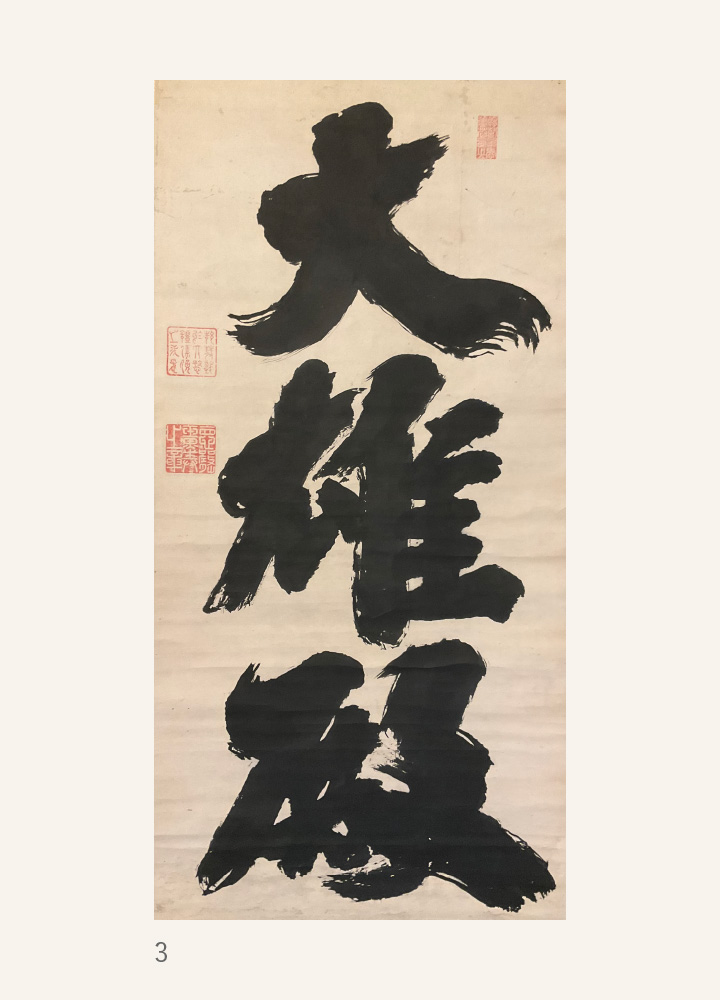
Chapter 3The Revitalization of Shinnyo-ji Temple
“Daiyuden” Hall’s Flat Plaque Ink Rubbings – Shinnyo-ji Temple Collection – (Image 3) – *First public display
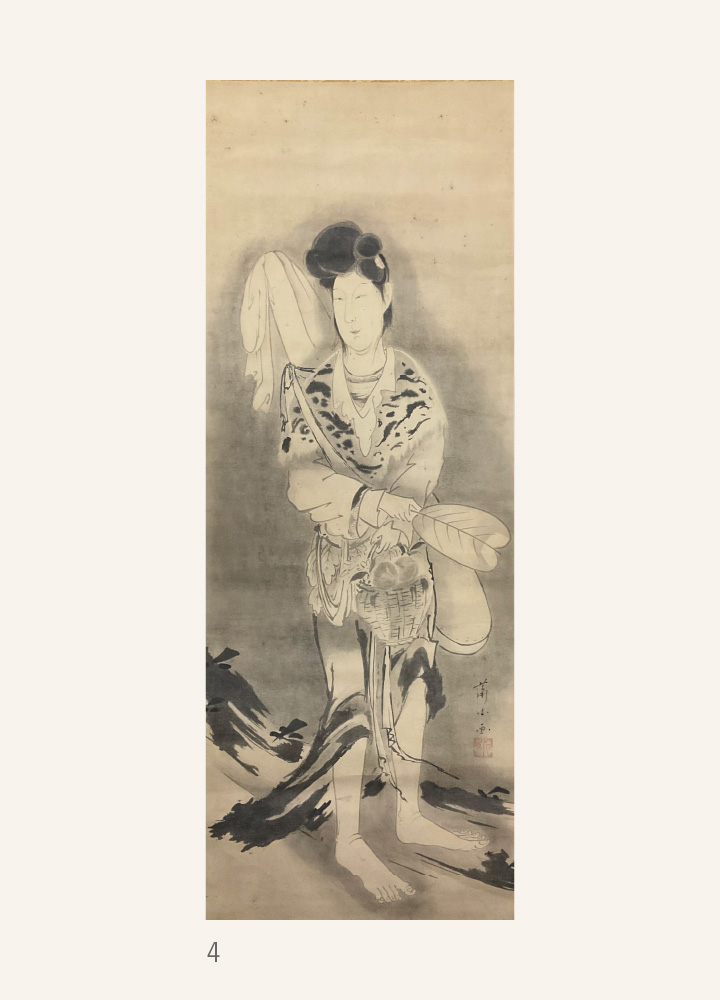
Chapter 4Women Depicted in Temple Treasures
The Queen Mother of the West – Soga Shohaku Brush – Jisho-ji Temple Collection – (Image 4) – *First public display
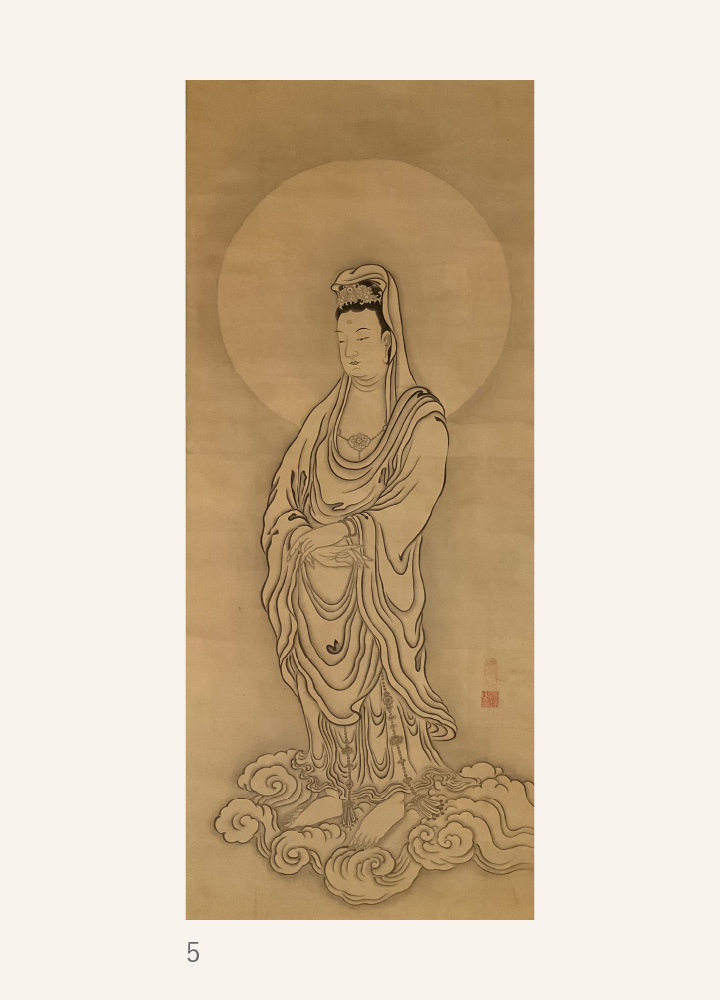
Chapter 5 Imperial Princesses and Zen in the Modern Era
Kannon Statue – Shosan Gen’yo Brush – Zuishun-in Temple Collection – (Image 5) – *First public display
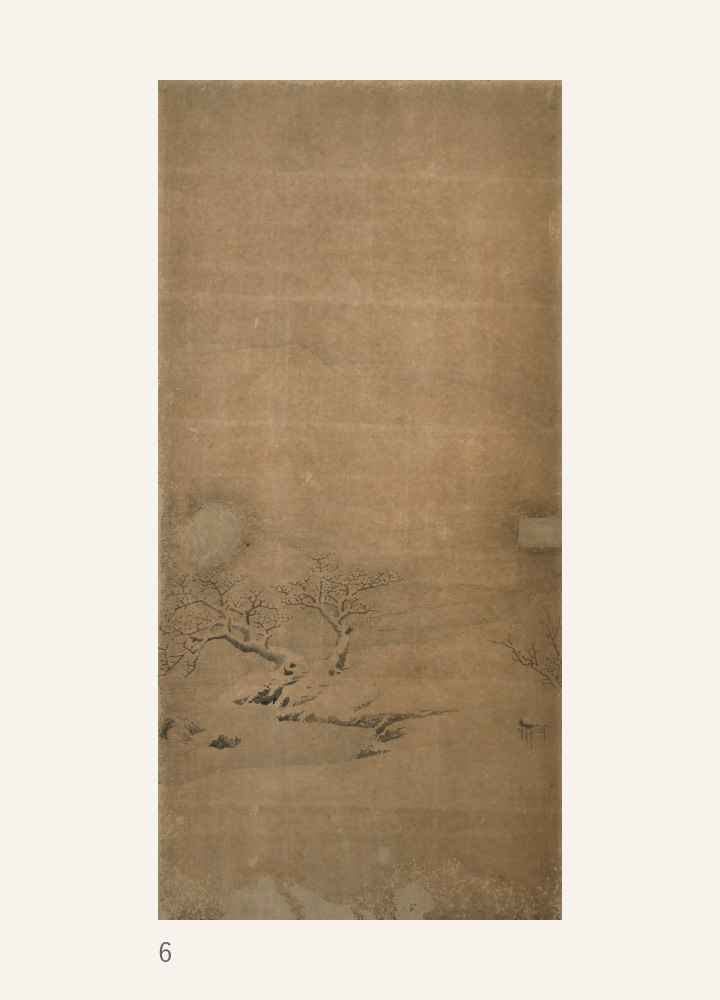
Chapter 6Contributions by Modern Empresses
Muso-Kokushi Statue – Gyojo-Hosshinno Brush – Fumei-Kokushi Statue – Ashikaga Yoshimitsu Statue – Kano Tanyu Brush – Shokoku-ji Temple Collection
Opening Mountain Hall Fusuma Painting – Snowy Mountain Landscape – Maruyama Okyo Brush – Ten Panels – Shokoku-ji Temple Collection – (Image 6)
Period II – Highlight
Highlight 1Treasures of Shinnyo-ji Temple
Tracing the history of Shinnyo-ji Temple, a renowned temple belonging to the Shokoku-ji Temple sect listed among the Five Mountains and Ten Temples of Zen Buddhism, one can find its origins in the “Shomyaku-an” founded by Mugainyodai in 1286. In the 16th century, it became the site of the Buddhist practice of princesses and became known as Hokyo-ji Temple. This year marks the 800th anniversary of the birth of Mugainyodai, the founder of Shinnyo-ji Temple. With the full cooperation of Shinnyo-ji Temple, we will be exhibiting these treasures.
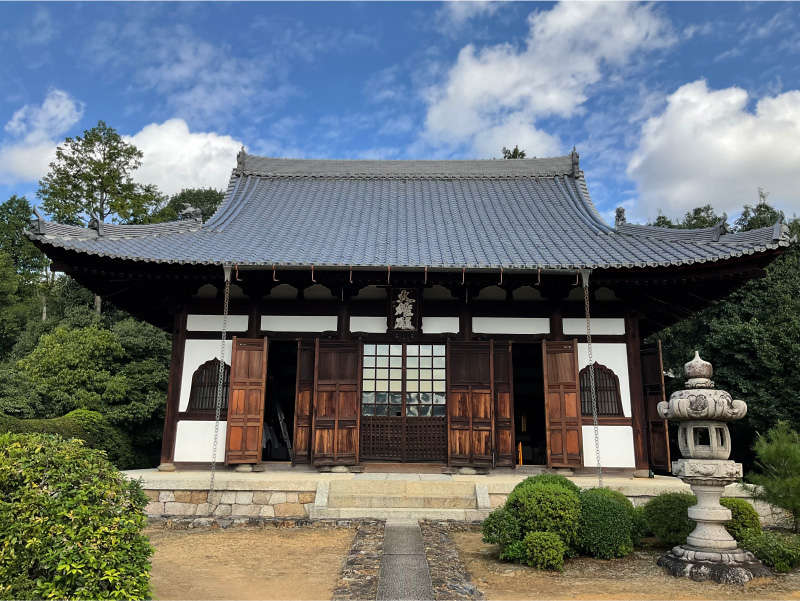
The Great Hero Hall of Shinnyo-ji Temple’s Hodo
Highlight 2Shokoku-ji Temple sect temples and princesses in the Early Modern Period
The chief abbot’s quarters at Shokoku-ji Temple’s Rokuon-ji were reconstructed in 1768 by the Gomizunoo-in. The plaque on the building bears the inscription that it was completed at the request of the Gomizunoo-in princess, Princess Mitsuko. Princess Mitsuko (later known as Shosan Gen’yo after becoming a nun) is also credited with bringing statues of the Buddhist goddess of mercy, among other artifacts, to Shokoku-ji Temple’s multiple pagodas. This will be the first public exhibition of paintings and calligraphy created by princesses who entered temples such as Hokyo-ji Temple and Daisho-ji Temple.
Basic Information
- Exhibition Period
- Period I: March 11 (Sat) – May 7 (Sun), 2023
Period II: May 28 (Sun) – July 16 (Sun), 2023 - Closed Day
- May 8 (Mon) – May 27 (Sat), 2023
- Hours
- 10:00 AM – 5:00 PM (entry until 4:30 PM)
- Admission
-
General ¥800 College students and age 65 or older ¥600 Junior high and high school students ¥300 Elementary school students ¥200 *Group discount for 20 people or more (general public) ¥700/person
- Host
- Shokoku-ji Jotenkaku Museum
- Special Cooperation
- Shinnyo-ji Temple (Period II)
- Sponsorship
- Mannenkai (General Incorporated Foundation), Rokuon-ji Temple, Jisho-ji Temple
Related Events
Period I
Slide Talk April 1 (Sat), May 6 (Sat) 2:00 PM – 2:30 PM
Lecture May 3 (Wed, holiday) 2:00 PM – 3:30 PM
Period II
Slide Talk June 3 (Sat), July 1 (Sat) 2:00 PM – 2:30 PM
Lecture June 24 (Sat) 2:00 PM – 3:30 PM
Location
Museum Lecture Hall (Doors open at 1:30 PM)
* A same-day admission ticket is required for each event
* Note: These events may be cancelled due to circumstances such as the spread of the coronavirus. Please check the latest information on our website.
Press Release
-
December 27, 2022
The press release for “The Stories Passed Down in Zen Temples” has been published.

